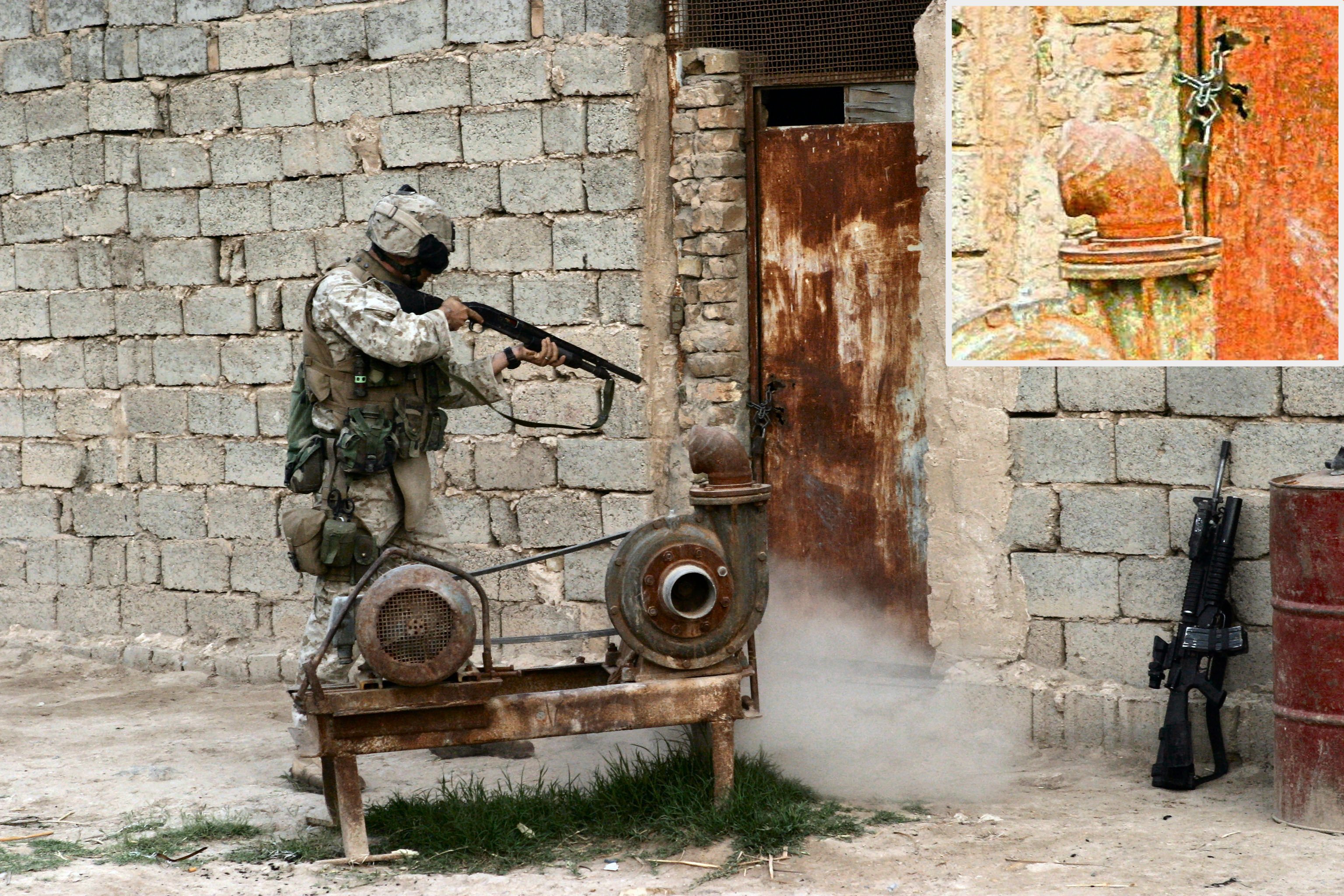|
Forcible Entry
Forcible entry is "the unlawful taking of possession of real property by force or threats of force or unlawful entry into or onto another's property, especially when accompanied by force". The term is also sometimes used for entry by military, police, or emergency personnel, also called breaching. For the fire service, forcible entry is defined by the International Fire Service Training Association (IFSTA) as: Breaching doorways can be differentiated as "through the lock" or "through the door" depending on the techniques used. England and Wales Forcible entry was a common law offence in England and Wales, but was abolished, along with forcible detainer, by the Criminal Law Act 1977. It was replaced with a new offence of "using violence to secure entry" under section 6 of that Act. Formerly the Forcible Entry Act 1381, chapter 2 of 15 Ric 2 (1391), the Forcible Entry Act 1429, the Forcible Entry Act 1588 and the Forcible Entry Act 1623 (repealed). Judge Donaldson considered ... [...More Info...] [...Related Items...] OR: [Wikipedia] [Google] [Baidu] |
Forcible Entry Act 1623
The Forcible Entry Act 1623 (21 Jac 1 c 15) was an Act of the Parliament of the Kingdom of England. It provided that any judge who already had a statutory power, on enquiry, to give restitution of possession of freehold land in respect of which forcible entry or forcible detainer was being committed, was to have the same power, on an indictment for forcible entry or forcible detainer committed in respect of land held for a term of years to give restitution of possession of that land. See also Forcible Entry Act References *Halsbury's Statutes ''Halsbury's Statutes of England and Wales'' (commonly referred to as ''Halsbury's Statutes'') provides updated texts of every Public General Act of the Parliament of the United Kingdom, Measure of the Welsh Assembly, or Church of England Mea ..., Third Edition, volume 18, page 412 *The Statutes, Third Revised Edition, HMSO, 1950 Acts of the Parliament of England 1623 in England 1623 in law {{England-statute-stub ... [...More Info...] [...Related Items...] OR: [Wikipedia] [Google] [Baidu] |
Firefighting
Firefighting is the act of extinguishing or preventing the spread of unwanted fires from threatening human lives and destroying property and the environment. A person who engages in firefighting is known as a firefighter. Firefighters typically undergo a high degree of technical training. This involves structural firefighting and wildland firefighting. Specialized training includes aircraft firefighting, shipboard firefighting, aerial firefighting, maritime firefighting, and proximity firefighting. Firefighting is a dangerous profession due to the toxic environment created by combustible materials, with major risks are smoke, oxygen deficiency, elevated temperatures, poisonous atmospheres, and violent air flows. To combat some of these risks, firefighters carry self-contained breathing apparatus. Additional hazards include falls — a constant peril while navigating unfamiliar layouts or confined spaces amid shifting debris under limited visibility – and structural collaps ... [...More Info...] [...Related Items...] OR: [Wikipedia] [Google] [Baidu] |
Crimes
In ordinary language, a crime is an unlawful act punishable by a state or other authority. The term ''crime'' does not, in modern criminal law, have any simple and universally accepted definition,Farmer, Lindsay: "Crime, definitions of", in Cane and Conoghan (editors), '' The New Oxford Companion to Law'', Oxford University Press, 2008 (), p. 263Google Books). though statutory definitions have been provided for certain purposes. The most popular view is that crime is a category created by law; in other words, something is a crime if declared as such by the relevant and applicable law. One proposed definition is that a crime or offence (or criminal offence) is an act harmful not only to some individual but also to a community, society, or the state ("a public wrong"). Such acts are forbidden and punishable by law. The notion that acts such as murder, rape, and theft are to be prohibited exists worldwide. What precisely is a criminal offence is defined by the criminal law of ... [...More Info...] [...Related Items...] OR: [Wikipedia] [Google] [Baidu] |
Door Breaching
Door breaching is a process used by military, police, or emergency services to force open closed or locked doors. A wide range of methods are available depending on the door's opening direction (inward or outward), construction materials, etc., and one or more of these methods may be used in any given situation. In the United States, residential doors typically open inward while commercial building doors usually open outward. Some breaching methods require specialized equipment and can be categorized as one of the following: mechanical breaching, ballistic breaching, hydraulic breaching, explosive breaching, or thermal breaching. Manual methods The simplest solution is to check the door knob first. Utilizing a breaching tool is unnecessary if the door is unlocked and easy to open. If the door is locked, breachers can attempt to force inward-opening doors with a strong kick. The breacher will aim to hit the door near the locking mechanism, but not kick the doorknob itself as ... [...More Info...] [...Related Items...] OR: [Wikipedia] [Google] [Baidu] |
Vandalism
Vandalism is the action involving deliberate destruction of or damage to public or private property. The term includes property damage, such as graffiti and #Defacement, defacement directed towards any property without permission of the owner. The term finds its roots in an Age of Enlightenment, Enlightenment view that the Germanic Vandals were a uniquely destructive people. Etymology The Vandals, an ancient Germanic people, are associated with senseless destruction as a result of their Sack of Rome (455), sack of Rome under King Genseric in 455. During the Age of Enlightenment, Enlightenment, Rome was idealized, while the Goths and Vandals were blamed for its destruction. The Vandals may not have been any more destructive than other invaders of ancient times, but they did inspire English poet John Dryden to write, ''Till Goths, and Vandals, a rude Northern race, Did all the matchless Monuments deface'' (1694). However, the Vandals did intentionally damage statues, which ma ... [...More Info...] [...Related Items...] OR: [Wikipedia] [Google] [Baidu] |
Home Invasion
A home invasion, also called a hot prowl burglary, is a sub-type of burglary (or in some jurisdictions, a separately defined crime) in which an offender unlawfully enters into a building residence while the occupants are inside. The overarching intent of a hot prowl burglary can be theft, robbery, assault, sexual assault, murder, kidnapping, or another crime, either by stealth or direct force.Byron, Reginald; Molidor, William; Cantu, Andrew (2018). "US Newspapers' Portrayals of Home Invasion Crime". The Howard Journal of Crime and Justice. 57(2): 250-277. https://onlinelibrary.wiley.com/doi/abs/10.1111/hojo.12257 Hot prowl burglaries are considered especially dangerous by law enforcement because of the potential for a violent confrontation between the occupant and the offender. Historiography The first published use of the term "home invasion" recorded in the ''Oxford English Dictionary'' is an article in ''The Washington Post'' on 1 February 1912, with an article in the ''Los An ... [...More Info...] [...Related Items...] OR: [Wikipedia] [Google] [Baidu] |
Trespass
Trespass is an area of tort law broadly divided into three groups: trespass to the person, trespass to chattels Trespass to chattels is a tort whereby the infringing party has intentionally (or, in Australia, negligently) interfered with another person's lawful possession of a chattel (movable personal property). The interference can be any physical cont ..., and trespass to land. Trespass to the person historically involved six separate trespasses: threats, assault, battery, wounding, mayhem (or maiming), and false imprisonment. Through the evolution of the common law in various jurisdictions, and the codification of common law torts, most jurisdictions now broadly recognize three trespasses to the person: assault, which is "any act of such a nature as to excite an apprehension of battery";''Johnson v. Glick'', battery, "any intentional and unpermitted contact with the plaintiff's person or anything attached to it and practically identified with it"; and false imprisonm ... [...More Info...] [...Related Items...] OR: [Wikipedia] [Google] [Baidu] |
Burglary
Burglary, also called breaking and entering and sometimes housebreaking, is the act of entering a building or other areas without permission, with the intention of committing a criminal offence. Usually that offence is theft, robbery or murder, but most jurisdictions include others within the ambit of burglary. To commit burglary is to ''burgle'', a term back-formed from the word ''burglar'', or to ''burglarize''. Etymology Sir Edward Coke (1552–1634) explains at the start of Chapter 14 in the third part of '' Institutes of the Lawes of England'' (pub. 1644), that the word ''Burglar'' ("''or the person that committeth burglary''"), is derived from the words ''burgh'' and ''laron'', meaning ''house-thieves''. A note indicates he relies on the ''Brooke's case'' for this definition. According to one textbook, the etymology originates from Anglo-Saxon or Old English, one of the Germanic languages. (Perhaps paraphrasing Sir Edward Coke:) "The word ''burglar'' comes from the two ... [...More Info...] [...Related Items...] OR: [Wikipedia] [Google] [Baidu] |
A Fortiori
''Argumentum a fortiori'' (literally "argument from the stronger eason) (, ) is a form of argumentation that draws upon existing confidence in a proposition to argue in favor of a second proposition that is held to be implicit in, and even more certain than, the first. Usage American usage In '' Garner's Modern American Usage'', Garner says writers sometimes use ''a fortiori'' as an adjective as in "a usage to be resisted". He provides this example: "Clearly, if laws depend so heavily on public acquiescence, the case of conventions is an ''a fortiori'' ead ''even more compelling''one." Jewish usage ''A fortiori'' arguments are regularly used in Jewish law under the name kal va-chomer, literally "mild and severe", the mild case being the one we know about, while trying to infer about the more severe case. Relation with Ancient Indian Logic In ancient Indian logic (nyaya), the instrument of argumentation known as ''kaimutika'' or ''kaimutya nyaya'' is found to have res ... [...More Info...] [...Related Items...] OR: [Wikipedia] [Google] [Baidu] |
Forcible Entry Act 1588
The Forcible Entry Act 1588 (31 Eliz 1 c 11) was an Act of the Parliament of the Kingdom of England. Its purpose was to prevent the avoidance of the proviso to the Forcible Entry Act 1429. It provided that no restitution was to be made on an indictment for forcible entry against parties who had been in possession of the land for three years or more. It further provided that the fact of three or more years possession could be alleged in stay of restitution, on penalty of payment of costs if that fact was not proved.This is how the statute is summarised in the two marginal notes to it in "The Statutes" referred to above. See also Forcible Entry Act References *Halsbury's Statutes ''Halsbury's Statutes of England and Wales'' (commonly referred to as ''Halsbury's Statutes'') provides updated texts of every Public General Act of the Parliament of the United Kingdom, Measure of the Welsh Assembly, or Church of England Mea ..., Third Edition, volume 18, page 411 *The Statu ... [...More Info...] [...Related Items...] OR: [Wikipedia] [Google] [Baidu] |
Door Breaching
Door breaching is a process used by military, police, or emergency services to force open closed or locked doors. A wide range of methods are available depending on the door's opening direction (inward or outward), construction materials, etc., and one or more of these methods may be used in any given situation. In the United States, residential doors typically open inward while commercial building doors usually open outward. Some breaching methods require specialized equipment and can be categorized as one of the following: mechanical breaching, ballistic breaching, hydraulic breaching, explosive breaching, or thermal breaching. Manual methods The simplest solution is to check the door knob first. Utilizing a breaching tool is unnecessary if the door is unlocked and easy to open. If the door is locked, breachers can attempt to force inward-opening doors with a strong kick. The breacher will aim to hit the door near the locking mechanism, but not kick the doorknob itself as ... [...More Info...] [...Related Items...] OR: [Wikipedia] [Google] [Baidu] |






